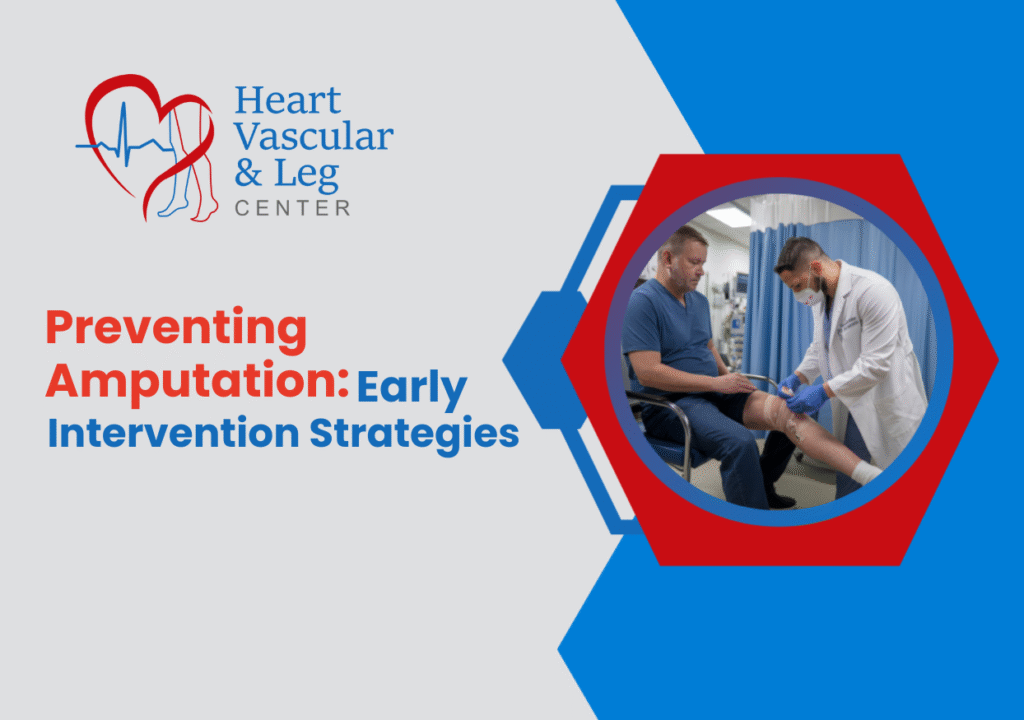
No one wants to have to think about losing a limb, but for a person with poor circulation, diabetes, or peripheral artery disease, the fear of amputation looms in the back of their mind.
But most amputations can be avoided with early intervention.
You’re not completely powerless in this.
True, something like PAD or diabetes complications can be fairly serious, but with the right understanding and quick action, everything could change.
So, let’s go over the strategies that can assist you in preserving healthy, functioning limbs.
Millions of Americans experience reduced blood flow to their limbs because plaque builds up in their arteries.
If adequate circulation does not take place, the tissues will not get enough oxygen and nutrients that are meant for the provision of healing.
Diabetes just puts another level of complexity onto the issue.
High blood sugar levels over time will damage nerves and blood vessels, making it extremely difficult for the body to heal and fight off infections.
Having both conditions greatly increases your risk.
Catch it early. The feeling in your feet, pain in your legs when you move around, or a little cut that refuses to heal. These are not minor nuisances.
This is what happens when something goes wrong. These are signals.
Easy changes in the routine now will bring huge returns of mobility and independence later on.
Think of these changes as investments in future mobility and independence.
If you smoke, stopping is the single most important thing you can do for your circulation.
Smoking damages blood vessels and reduces oxygen in your blood, making healing almost impossible.
Yes, it’s a tough habit to kick, but your limbs depend on it.
Regular walking is great for circulation. Even a 15-minute walk after meals can help increase blood flow to your legs.
Increase the distance as you grow stronger.
Concentrate on eating these healthy circulation-supporting foods:
Keep your blood pressure, cholesterol, and blood sugar within the normal range.
All three of these tend to collaborate if left uncontrolled, damaging your blood vessels.
At the Heart Vascular and Leg Center by Dr. Kumar, we are committed to stopping amputation before it can start.
We understand how scary it can be to encounter problems with circulation and, in this regard, are pleased to provide progressive yet patient-centered interventions aimed at reestablishing the flow of blood and protecting your quality of life.
Once you meet us, we provide you with a professional prognosis and a treatment plan that suits your exclusive needs.
Our facility specializes in minimally invasive procedures; thus, the treatment is effective but with less downtime and a much easier recovery process.
Here’s how we do it:
With the latest technology and a compassionate approach, Heart Vascular and Leg Center by Dr. Kumar is here to give you the best chance to keep your limbs healthy, active, and pain-free.
Here’s something that many don’t get: the earlier you catch the circulation problem, the more treatment options available to you; and vice versa.
If you wait until there’s a severe pain or open wound, then you limit your options and increase the difficulty of successful treatment.
Regular visits to a vascular specialist can catch problems before they become limb-threatening.
Ankle-brachial index measurements can show that simple tests can show where the problem with circulation lies, even before you feel any symptoms.
If you’re experiencing any of the warning signs – pain in your legs while walking, cuts that heal slowly, changes in skin color, cold feet, don’t wait.
Getting in early can mean the difference between a simple outpatient procedure and a major amputation.
Prevention is not only keeping you out of amputation but keeping your quality of life, independence, and mobility for the rest of many years to come.
Each healthy decision, each appointment, and each symptom addressed on time all add to better outcomes.
Don’t forget: It’s really in your hands to manage your vascular health.
Get the right lifestyle, medical care, and intervention in time; your risk can be negated, and you can keep moving confidently!
Don’t lose sleep over your circulation.
Let the team at the Heart Vascular and Leg Center by Dr. Kumar help you figure out what your options are and create a prevention plan that works for your lifestyle if you are symptomatic or have risk factors for vascular disease.
Specialists use the most minimally invasive procedures to restore circulation and prevent limb loss.
Our team supports patients through every step of the process.
How can you prevent amputations?
What are the nursing interventions for stump care for the first 24 hours?
Initial stump care includes:
What are the two most common causes of amputations?
The two most common underlying diseases that contribute to amputation are:
© Copyright 2024 Vascular Health Partners LLC. All Rights Reserved
Designed By CyberWorx